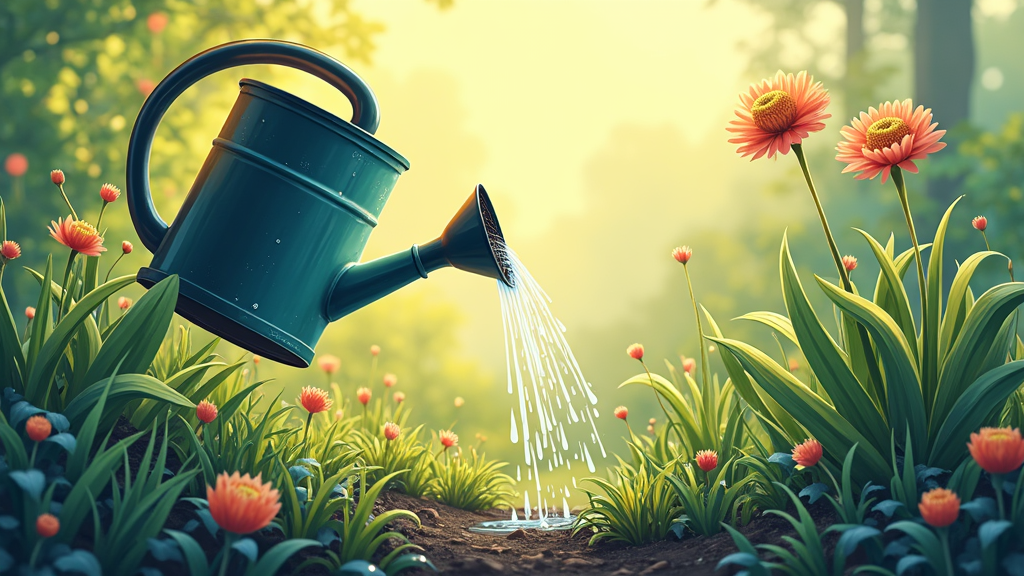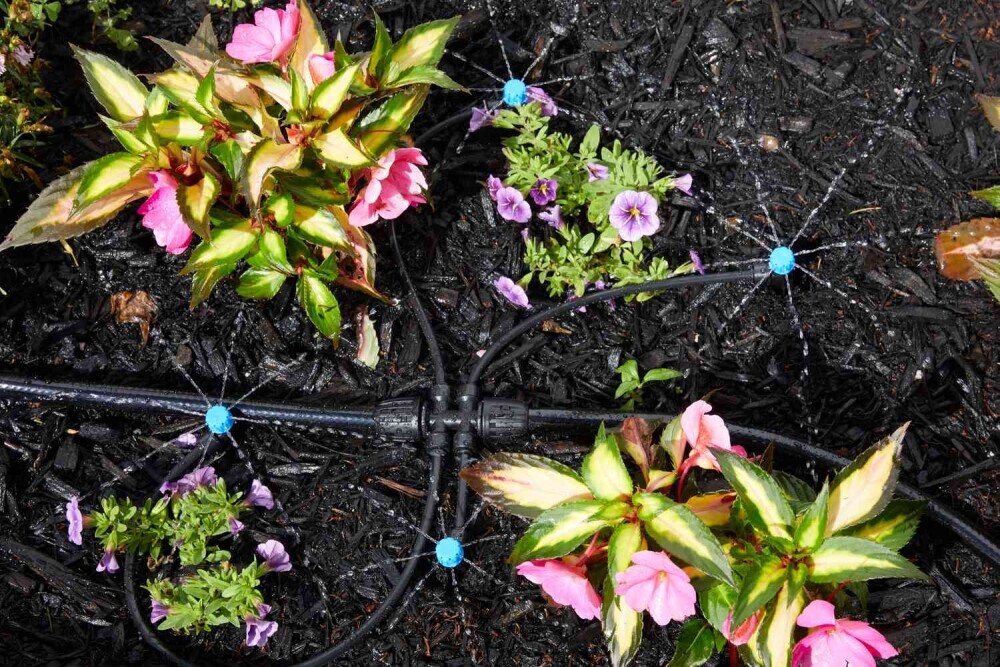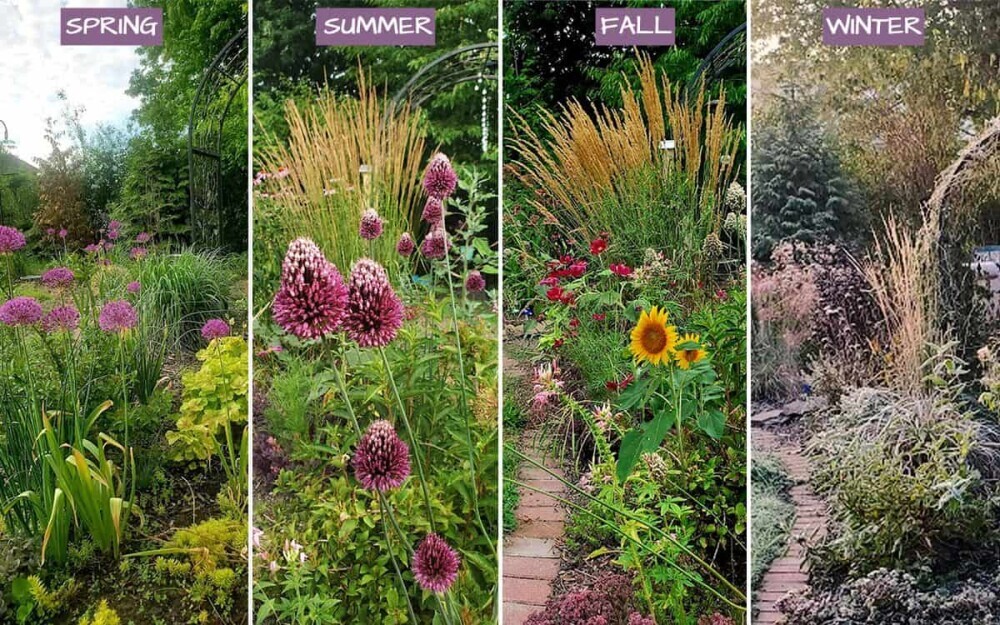Keeping your plants hydrated is all about understanding the balance between too much and too little water. I’ve spent a lot of time tending to my own garden, learning that watering plants effectively is a mix of art and science. This guide is designed to help you get a clear picture of essential plant watering, offering plant hydration tips that cover key aspects like watering frequency, soil type, and proper techniques. Water is essential for plant survival and health, and getting the right amount at the right time can mean the difference between lush growth and stressed, wilted plants.

Understanding Watering Basics
Water plays many roles in plant care. It is not just about quenching a plant’s thirst; water fuels photosynthesis, helps transport nutrients, and maintains the physical structure of the plant. When you learn how to water plants correctly, you’re investing in a healthier garden. Over time, you’ll notice significant improvements when you master effective watering methods.
Keeping your plants hydrated isn’t just a catchy title. It encapsulates the essentials of plant hydration tips that guide you on how to water plants properly. Whether you’re using a watering wand, drip irrigation, or simply a watering can, understanding the underlying science can set you up for success. The following sections break down the most relevant factors you should know about watering and keeping plants hydrated.
10 Key Insights to Effective Watering
There are 10 insightful points every gardener should know about watering. These pointers range from the type of plant to soil conditions and environmental factors. Below is a detailed breakdown of each key aspect:
1. Watering Frequency Depends on Plant Type and Growth Stage
Different plants need water at varying intervals. Succulents and cacti, for instance, thrive on infrequent watering since they store water in their leaves. Leafy annuals and tropical plants often need more frequent watering. Seedlings and newly transplanted plants require consistently moist soil but not waterlogged conditions. Knowing your plant type is a fundamental part of essential plant watering.
2. Soil Type Dictates Water Retention and Drainage
Soil is the medium through which water travels to the roots. Sandy soils drain quickly and may require more frequent watering because water passes through rapidly. Clay soils retain water for longer periods but can become problematic if overwatered, as this can lead to root rot. Loamy soil usually offers the best of both worlds but still benefits from monitoring moisture levels closely.
3. Deep, Infrequent Watering Is Better Than Shallow, Frequent Watering
One great tip on how to water plants is to water deeply but less often. Deep watering encourages roots to grow downward, enabling the plant to access water in deeper soil layers. On the other hand, shallow watering only moistens the surface, causing roots to remain near the top and become vulnerable to drying out. This effective watering method strengthens overall plant health and improves drought resistance.
4. Best Time to Water: Early Morning
A common plant care watering tip is to water early in the morning. Watering in the morning ensures that leaves have time to dry before the heat of the day, which minimizes the risk of fungal diseases. Watering later in the day or in the evening can leave foliage wet for extended periods. This increases the chances of mold and mildew developing.
5. Know the Signs of Overwatering Versus Underwatering
Recognizing the visual cues of your plants is very important. Overwatered plants often show yellowing leaves, soggy soil, and signs of root rot, even though the soil remains continuously moist. Conversely, underwatered plants display symptoms such as wilting, dry soil pulling away from the pot edges, and crispy leaf margins. Spotting these signals early helps you adjust your watering schedule effectively.
6. Water at the Base, Not the Leaves
For effective watering techniques, deliver water at the plant’s base rather than over the leaves. This ensures that water reaches the roots directly and reduces the possibility of fungal issues on damp foliage. Tools like a soaker hose or drip irrigation system are excellent because they target the root zone.
7. Mulching Helps Maintain Soil Moisture
Mulch isn’t just a decorative element in your garden; it plays a major role in keeping plants hydrated. A layer of organic mulch, such as straw, wood chips, or shredded leaves, insulates the soil. A 2–3 inch layer helps reduce evaporation, regulate soil temperature, and suppress weeds, all of which contribute to more consistent moisture levels.
8. Container Plants Dry Out Faster Than In-Ground Plants
Plants in containers, especially those grown in porous materials like clay or terracotta, lose water more rapidly. They are more exposed to wind and sun, which accelerates evaporation. Because of this, container plants may require daily watering during hot or windy days, so it is important to adjust your approach based on the situation.
9. Environmental Conditions Affect Watering Needs
Weather plays a significant role in determining how often you need to water. Hot, windy, and sunny days can increase evaporation and may double or even triple the water requirements of your plants. In contrast, cool, humid, or shady conditions generally mean that plants need less water. Always keep an eye on local weather conditions to guide your watering routine.
10. Use Proper Watering Techniques and Tools
Having the right tools can make all the difference in your watering routine. Whether you’re using a watering wand, drip line, or soaker hose, the goal is to provide gentle, consistent moisture without disturbing the soil. Avoid high-pressure hoses that can erode topsoil or wash it away from the roots. Modern irrigation controllers that adjust watering automatically based on real-time weather conditions are worth considering if you want to streamline your plant care routine.
The Science Behind Plant Hydration
Water is essential for plant survival and health for a variety of reasons. Photosynthesis, the process by which plants produce food, relies heavily on water. During photosynthesis, water molecules split to allow plants to convert sunlight into chemical energy. This process fuels plant growth and overall vitality, underscoring why proper hydration is so important.
Another key function of water in plants is transpiration. Transpiration is the slow loss of water from the leaves, which serves to cool the plant, balance internal moisture levels, and aid in the upward movement of water from the roots. This steady water movement is critical for maintaining cell firmness known as turgor pressure. Without enough water, plants lose rigidity and begin to wilt.
Nutrient absorption is also heavily dependent on water. Water dissolves essential nutrients found in the soil, making them accessible to plant roots. These nutrients are then transported to various parts of the plant, where they contribute to growth and cell repair. Additionally, roots serve as storage for food and water and grow deeper into the soil through cell division to access reserves.
Osmosis is another natural process that plays a role in plant hydration. Water moves from areas of high concentration to areas of lower concentration within plant cells. This movement ensures a balanced internal environment, keeping cells firm and supporting overall plant structure.

Understanding Overwatering and Underwatering
Getting the amount of water right is very important, and both overwatering and underwatering can have negative consequences. Overwatering leads to waterlogged soil, which interferes with the absorption of essential nutrients and can result in root rot, potentially killing the plant. Signs of overwatering include yellow or limp leaves and a persistently wet root system.
Conversely, underwatering can be just as damaging. When plants do not receive enough water, they begin to wilt, lose rigidity, and develop dry, crispy leaf edges. Prolonged underwatering may cause irreversible damage to plant tissues. Striking the right balance by learning your plants’ specific water needs is a cornerstone of essential plant watering practices.
Effective Watering Techniques and Tools
When deciding how to water plants, using the proper techniques can make a big difference. One effective method is using a drip irrigation system that delivers water directly to the root zone without wetting the foliage, which helps prevent diseases. A watering wand offers similar precision by allowing careful control over the water flow.
It also pays to consider the quality of water used. While most tap water works fine, some plants are sensitive to chemicals found in treated water. In these cases, using rainwater or filtered water can be beneficial. Additionally, smart irrigation controllers can automate watering, adjusting water output based on weather conditions and soil moisture. This level of automation ensures that you never accidentally overwater or underwater your garden.

Additional Tips for Container and In-Ground Planting
Watering plants in containers requires special attention. Because container plants are more exposed to environmental conditions, they tend to dry out faster. It’s a good idea to frequently check the soil moisture and adjust your watering schedule accordingly. Using a layer of mulch on top of container soil can help retain moisture in the same way it benefits garden beds.
Plants grown in the ground benefit from a more stable water supply since the soil naturally holds moisture better than pots do. However, even in-ground plants are not immune to the effects of hot, windy weather. Understanding the local environment helps you decide the best watering schedule, ensuring a balanced water supply regardless of the planting method.
Seasonal Watering Adjustments and Extra Insights
As the seasons change, so do the water requirements of your garden. In the spring, when plants are emerging and the weather is mild, you may find that a modest water schedule is sufficient. However, as temperatures rise in the summer, evaporation rates increase significantly, meaning you might need to adjust your watering routine to keep up with the heightened demand. It’s important to monitor not only the weather but also seasonal soil behavior.
During the fall, as temperatures begin to drop and plants prepare for a rest period, reducing watering frequency can help prevent waterlogged soils that may lead to root issues. Winter poses its own challenges; in colder climates, water may freeze and damage delicate root systems, so watering techniques might need to be adjusted or temporarily halted. This seasonal perspective not only guides you in scheduling your watering routines but also in understanding the evolving needs of your plants throughout the year.
Beyond seasonal changes, consider local microclimates in your garden. Areas that receive more direct sunlight or wind exposure may require additional watering compared to more sheltered spots. Tracking these nuances over time can help you fine-tune your methods further, ensuring that every plant receives the optimal amount of hydration throughout the year. These extra insights can make a noticeable difference in overall garden health and productivity.

The Science of Advanced Irrigation Techniques
Modern irrigation systems have come a long way in helping gardeners manage water use more efficiently. Advances in smart technology now allow for real-time adjustments based on weather updates and soil moisture sensors. These systems can automatically map out the optimal watering schedule, ensuring that plants receive the right amount of water precisely when needed. With these tools at your disposal, you can tap into efficient watering techniques that not only conserve water but also promote more robust plant growth.
Many gardeners are now using automated systems that integrate with mobile apps, which means you can even check in on your garden remotely. This technology helps you stay on top of any sudden changes in the weather and adjust your watering plan accordingly, making it easier than ever to maintain a thriving garden.
Wrapping Up
Keeping your plants hydrated emphasizes a balanced approach to plant hydration. By understanding the core principles of when, how, and why to water, you can ensure that your plants receive just the right amount of moisture. Whether you are a beginner or a seasoned gardener, the 10 key insights above offer an all-in-one look at what works best for watering plants.
From the importance of deep, infrequent watering to the role of mulching and recognizing the signs of watering extremes, these plant hydration tips serve as your roadmap for effective plant care. Watering should not be a guessing game. It is a well-informed process that requires attention to environmental conditions, individual plant needs, and precise techniques.
Remember, water is essential for plant survival and health. It fuels photosynthesis, maintains cell firmness through turgor pressure, and dissolves nutrients necessary for growth. Whether you’re managing container or in-ground gardens, understanding how to water plants correctly is a key part of maintaining a healthy, vibrant garden.
Enjoy your time nurturing your garden, and let every drop count in your quest for thriving plants. As you continue to fine-tune your watering approach, you’ll find that even small adjustments can lead to noticeable improvements in plant growth and garden success over time.


Such a thorough and thoughtful guide, Iris! ???? I love how you blend both the science behind plant hydration and the practical techniques that truly make a difference in the garden. Your explanation of watering deeply and infrequently really resonated with me — it’s a method that has completely transformed how my plants grow and thrive. I also appreciated the focus on soil types and how environmental factors like wind and sun exposure can shift watering needs. Those small details are so important but often overlooked! Your seasonal watering tips were especially helpful; adjusting routines based on temperature and climate changes makes such a big difference in keeping plants healthy year-round. I also really liked how you touched on modern irrigation technology — it’s amazing how far things have come. This guide is a wonderful reference for gardeners at any level. Thank you for putting together such a clear, informative, and encouraging post!
Dear Christine,
Thank you so much for your kind and thoughtful words! It truly means the world to hear that the guide resonated with you and is making a real difference in your garden. You clearly have such a mindful approach to caring for your plants, and it’s wonderful to see how tuned in you are to the little details that can have such a big impact, like soil type, weather patterns, and seasonal shifts.
Gardening is such a beautiful balance of science, intuition, and a little bit of art, and I’m so happy that the post could support you on your journey. If you ever have questions or want to dive deeper into any specific topics, I’m always here and would love to keep the conversation going. Wishing you continued success and so much joy in your garden!
Much love,
Your Garden Guides
Thanks for sharing this awesome article about watering plants, Iris! You really explained everything in a way that’s super easy to get and actually pretty interesting.
I totally agree that knowing how to water plants the right way is super important if you want your garden to actually grow and not just die. The 10 tips they gave, like knowing your plants, checking the soil, looking for signs, and using the right stuff, are honestly super helpful.
What stood out to me the most was how you talked about finding that perfect balance between overwatering and underwatering. It’s crazy how bad it can go if you mess that up! I also thought it was cool how you mentioned watering differently depending on the season, I never even thought about that before.
And the tech part? So cool! I didn’t even know there were smart watering systems that check the weather and soil for you. Plus, being able to control it from your phone? That’s next level!
Overall, you article was really awesome and packed with tips that even beginners can use. We can totally tell that you loves gardening, and it kinda made me want to try growing something too.
Thanks again for posting this, Iris! It’s really clear the author wants to help people get better at gardening, and I think this article is gonna help a lot. Keep sharing cool stuff like this!
Eric
Hi Eric,
Wow, thank you so much for your thoughtful and kind message! Reading your comment truly made my heart light up. It means the world to know that the article resonated with you and that the tips felt both helpful and easy to follow, that’s exactly what I hope for when I write.
You’re absolutely right. Finding that sweet spot between overwatering and underwatering can really make all the difference, and it’s something even experienced gardeners keep working on. I’m so glad that part stood out to you! And yes, the new tech tools available for gardening are amazing — they make it so much easier (and fun) to stay connected with your plants, even from afar.
It’s wonderful to hear that the article inspired you to think about growing something, that’s the best compliment I could ever receive. Starting a garden, no matter how small, can be such a rewarding adventure. If you ever need any tips or have questions along the way, don’t hesitate to reach out. I’d be thrilled to help!
Thanks again for taking the time to share your thoughts, Eric. Keep that gardening curiosity alive.
I can already tell you’ll be great at it!
Warmly,
Iris
Understanding how to properly hydrate plants is essential for keeping them healthy and thriving. The focus on watering techniques for different types of plants is really useful. It’s easy to assume all plants need the same amount of water, but the reality is much more nuanced. I particularly agree with the idea that overwatering can be just as harmful as underwatering. It’s something many new gardeners don’t realize until it’s too late. The tip about adjusting watering schedules based on weather is also crucial, as even the best watering practices can be thrown off by changes in temperature or rainfall.
Thank you so much for your thoughtful comment! Watering is often seen as a simple task, but there’s so much nuance involved. It’s one of those skills that really separates thriving gardens from struggling ones. Overwatering, in particular, can sneak up on even the most attentive gardeners.
And yes, keeping an eye on weather patterns and adjusting accordingly is really key, plants are living things that respond to their environment just like we do. It’s wonderful to hear that you’re thinking so deeply about these practices. Keep up the great work in your garden, and feel free to reach out if you ever have more questions or experiences you’d like to share!